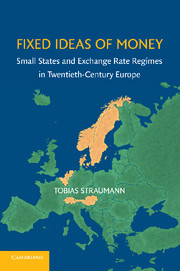PART 1 - THE INTERWAR YEARS
Published online by Cambridge University Press: 06 July 2010
Summary
The outbreak of World War I in August 1914 marked the beginning of a new era of monetary instability that Europe had not experienced since the Napoleonic wars. Each European country, whether belligerent or not, suspended convertibility, introduced exchange controls, and experienced high inflation resulting from the unsound financing of public debt. When the war ended, policymakers thought that a rapid return to the gold standard would bring back the prewar prosperity, but as is well known, this plan failed. Not only did it take longer than anticipated to restore the old monetary order, but the newly created gold exchange standard only aggravated the economic and political problems stemming from the war and the peace settlements. In the early 1930s, the international monetary system began to collapse. Austria and Germany experienced a severe banking crisis and introduced exchange controls, and the British government suspended convertibility and let the pound fall. In April 1933, the Roosevelt administration devalued the dollar, and in september 1936, France put the last nail in the coffin by devaluing its currency as well.
However, the interwar years not only were a period of disaster and instability, but they also opened up new opportunities for monetary experiments. Since the gold standard was not restored until the mid-1920s, central banks were free of the obligation to maintain a stable exchange rate and therefore enjoyed the potential to adjust their monetary policies to the business cycle.
- Type
- Chapter
- Information
- Fixed Ideas of MoneySmall States and Exchange Rate Regimes in Twentieth-Century Europe, pp. 21 - 23Publisher: Cambridge University PressPrint publication year: 2010



